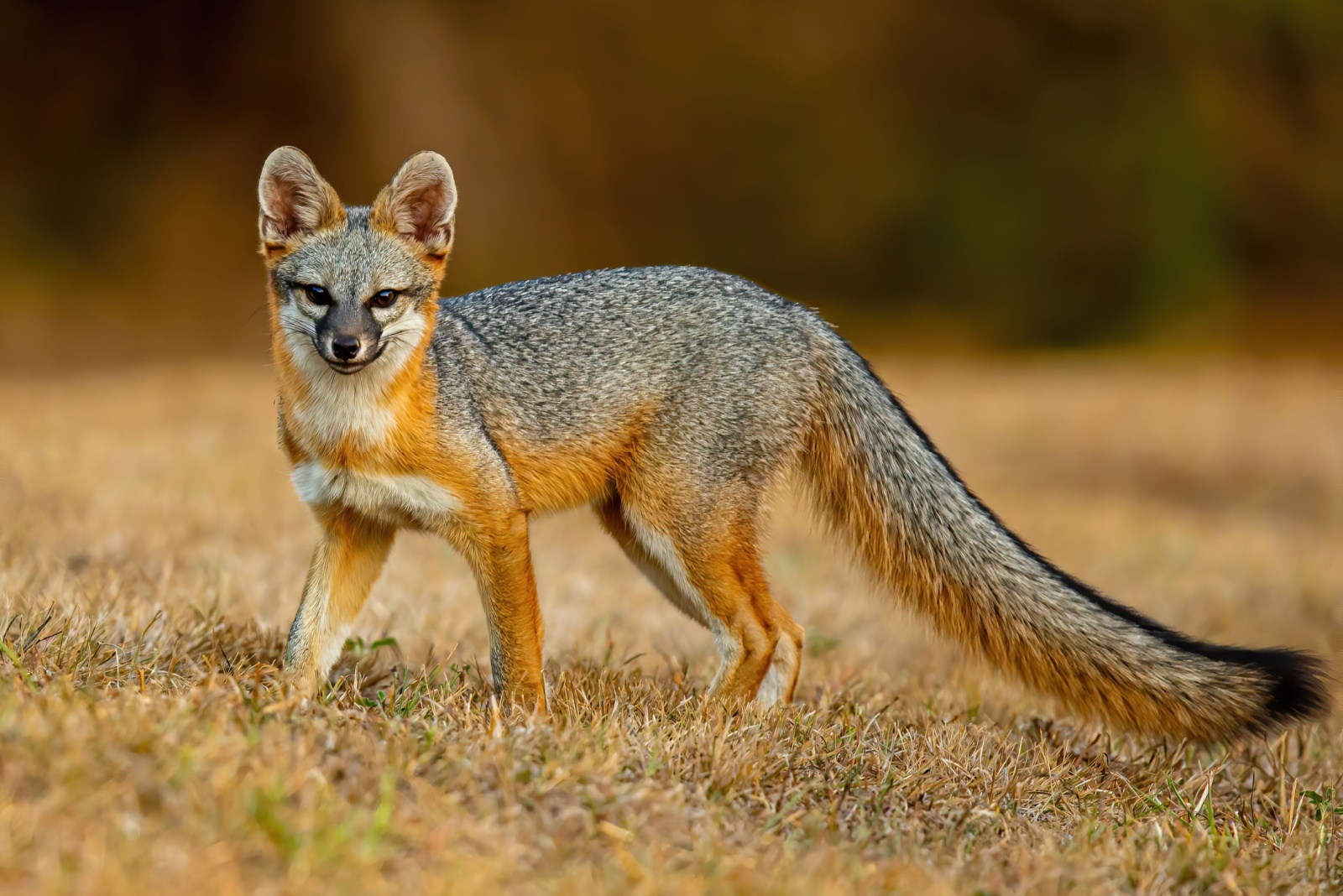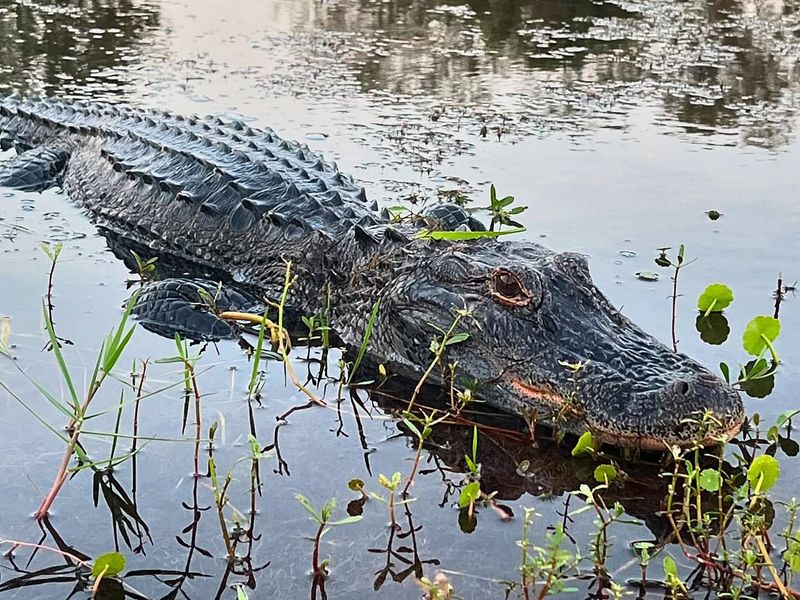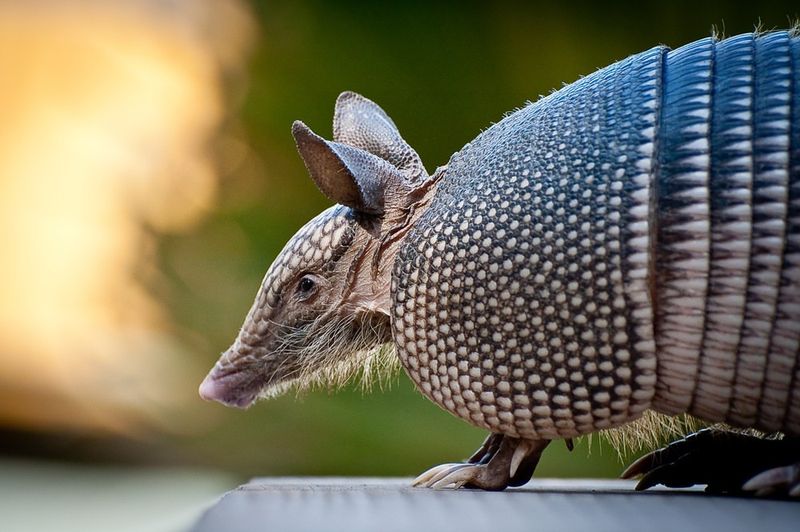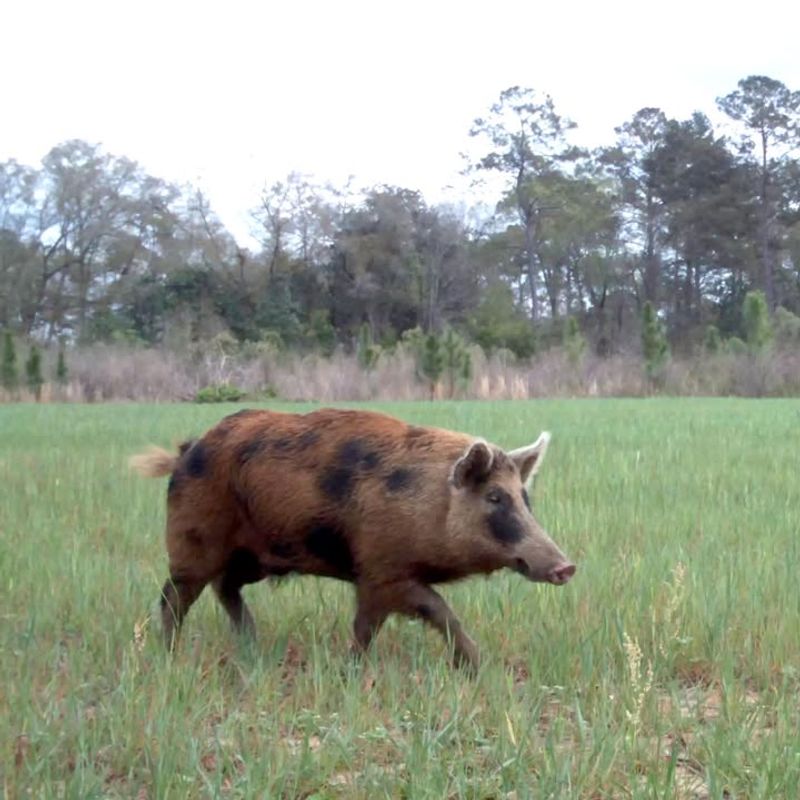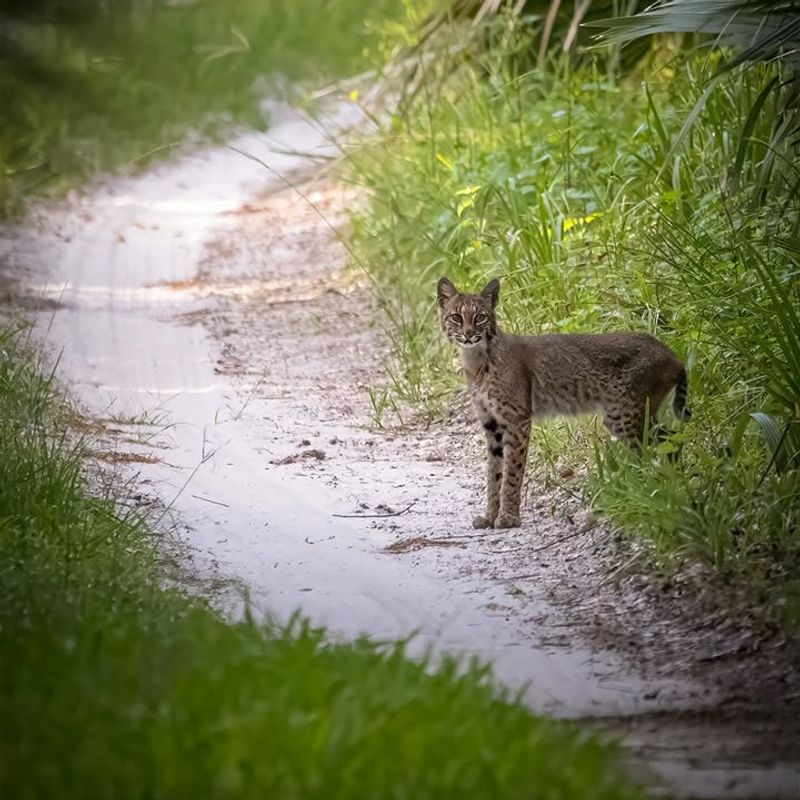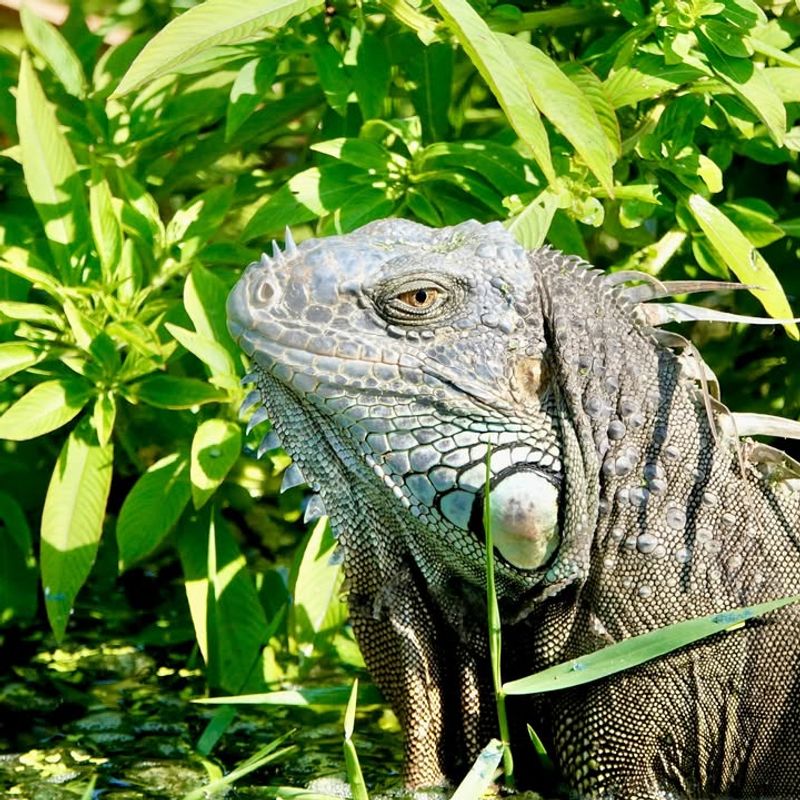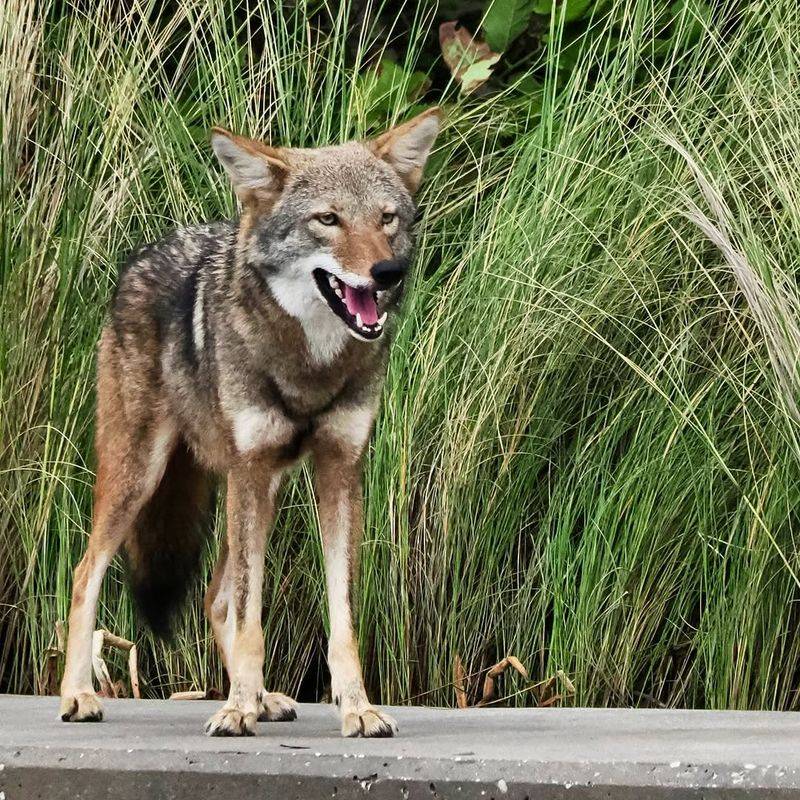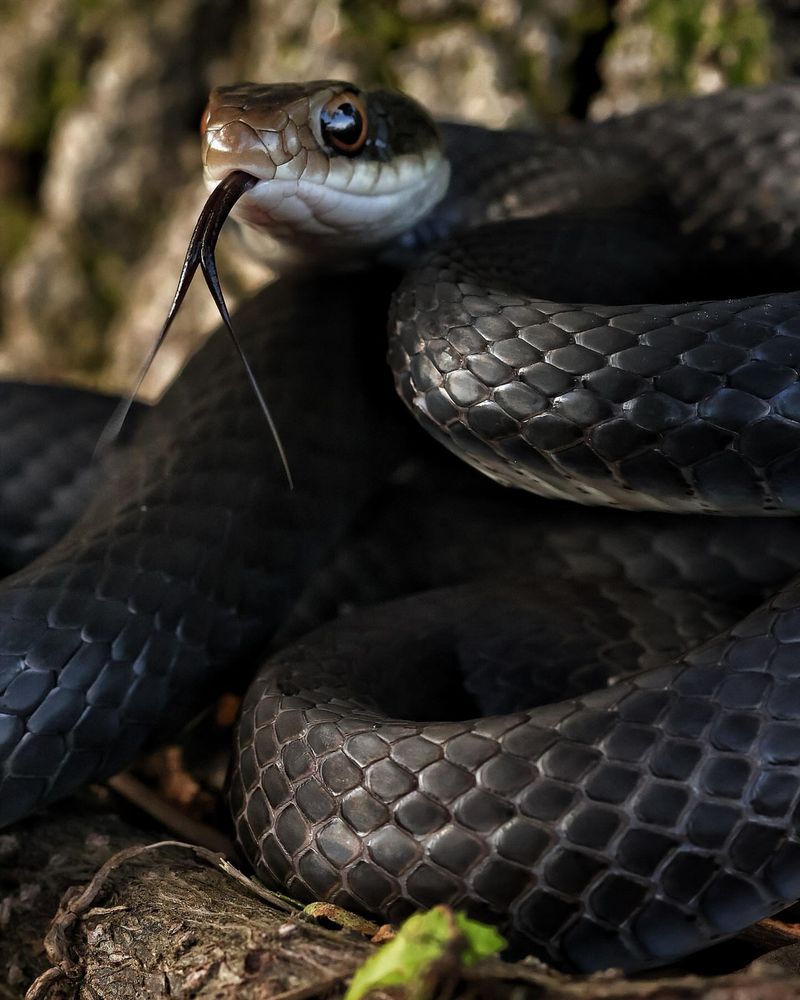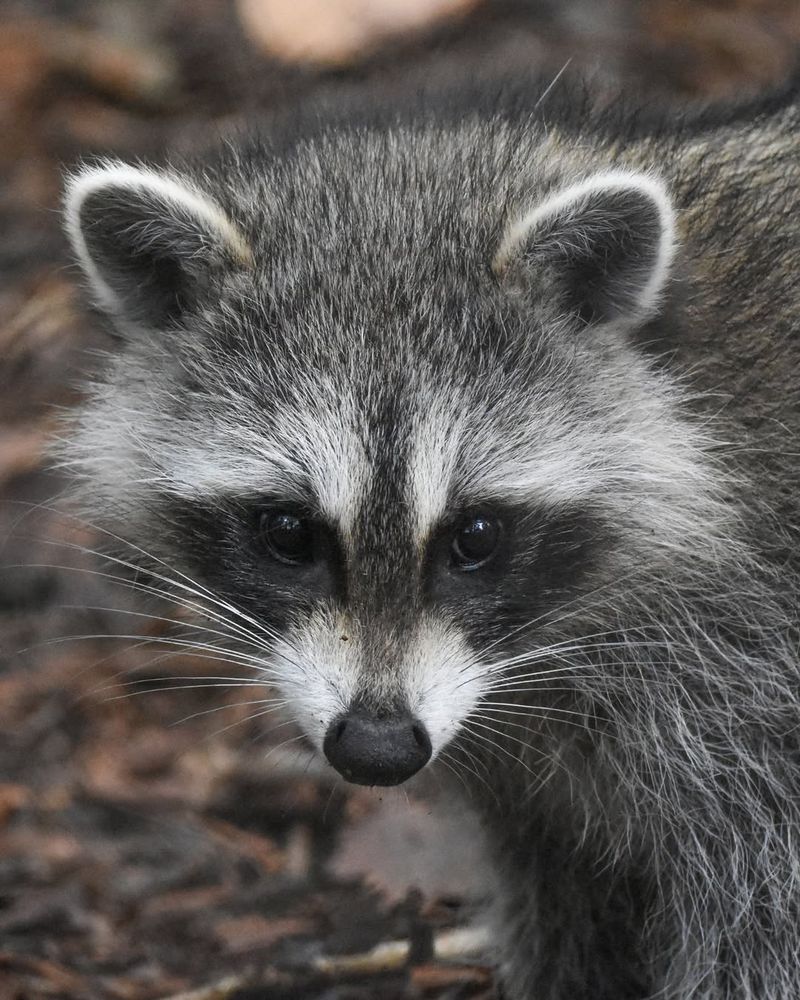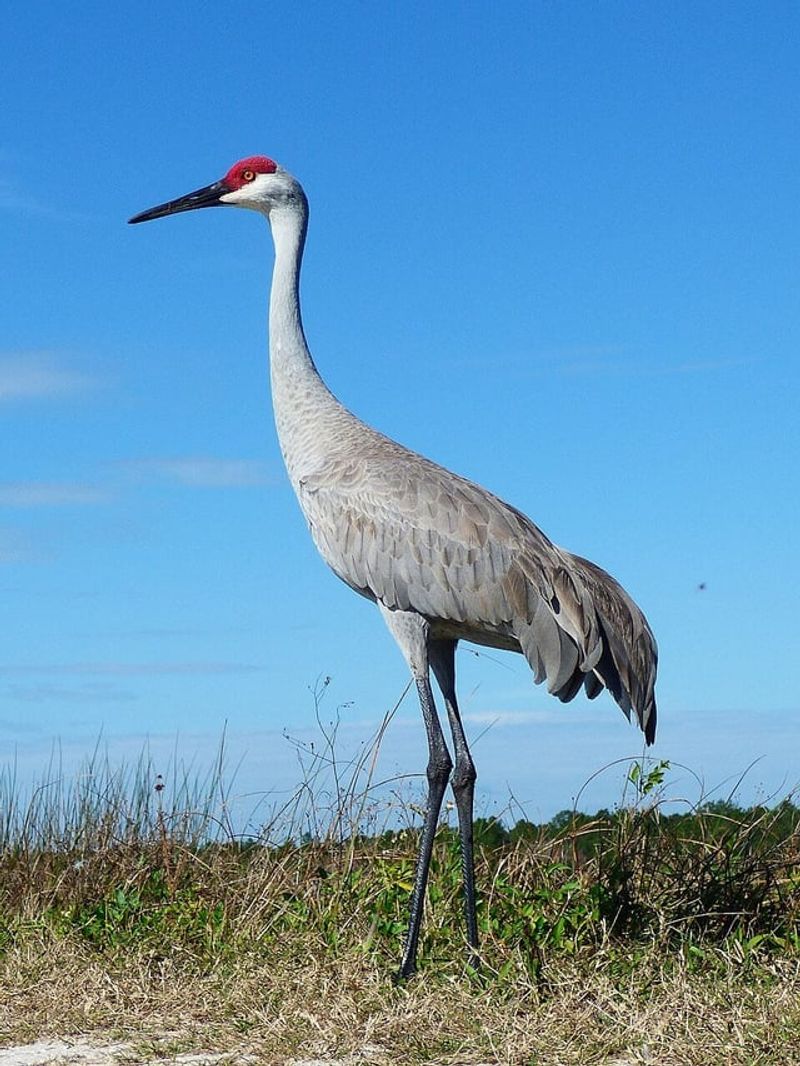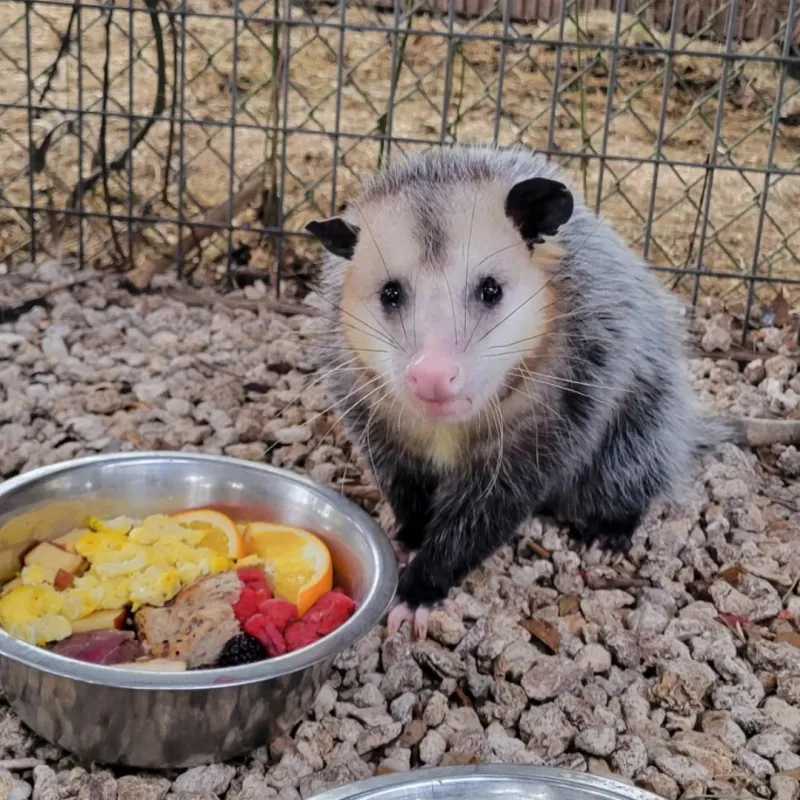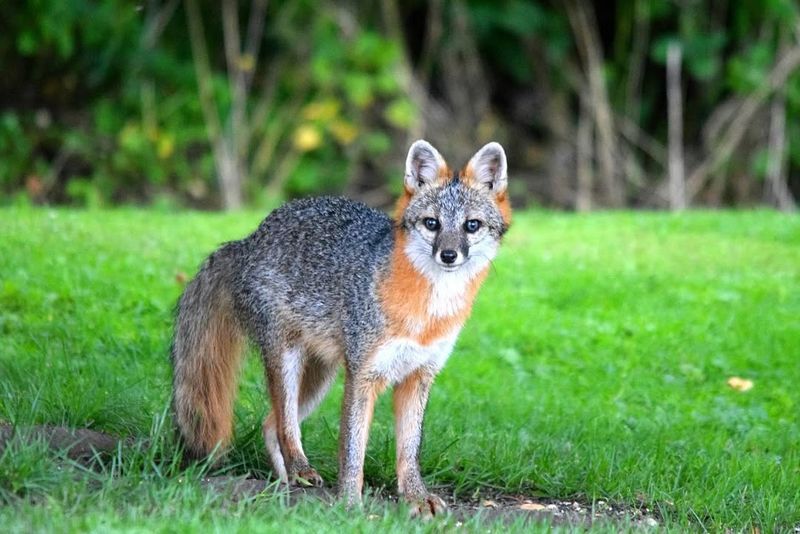Florida’s warm climate and diverse ecosystems make it a perfect home for wildlife that has learned to adapt to city life. From scaly reptiles to furry mammals, many wild creatures now share neighborhoods with people across the Sunshine State.
You might be surprised to discover which animals are currently living just outside your door, searching for food, shelter, and raising their families right alongside yours.
1. American Alligators
With a prehistoric appearance that demands respect, alligators have mastered urban living throughout Florida’s waterways. Any pond, lake, or retention basin could harbor these impressive reptiles, even in busy neighborhoods.
They typically avoid people but may approach if fed, which is illegal and dangerous. During mating season in spring, males bellow loudly enough to wake entire streets.
Always keep pets away from water edges and never swim in unmarked freshwater areas.
2. Nine-Banded Armadillos
Sporting armor-like shells that look straight out of medieval times, armadillos have expanded their territory across Florida in recent decades. Their nighttime digging creates small cone-shaped holes as they hunt for insects and grubs beneath your grass.
Despite their tough exterior, these animals are actually quite timid and will scurry away when startled. Their poor eyesight means they sometimes bump into patio furniture or garden decorations.
Those mysterious lawn divots? Probably an armadillo’s midnight snack hunt.
3. Wild Hogs
Descended from escaped farm pigs, wild hogs have become surprisingly common in Florida suburbs, especially near wooded areas. Their powerful snouts can destroy entire gardens overnight as they root through soil searching for anything edible.
Travel in groups called sounders, these intelligent animals are most active during cooler evening hours. Their tusks and unpredictable behavior make them potentially dangerous, so never approach or corner them.
Secure garbage cans and remove fallen fruit to discourage visits.
4. Bobcats
Stealthy and elusive, bobcats blend seamlessly into Florida’s urban landscapes despite being twice the size of house cats. Their spotted coats and short bobbed tails make them unmistakable if you’re lucky enough to spot one prowling at dawn or dusk.
These skilled hunters primarily target rabbits, rodents, and birds rather than pets, though small animals left outside remain vulnerable. Bobcats rarely threaten humans and usually retreat when encountered.
Motion-activated lights can help keep them moving through rather than settling in.
5. Iguanas
Originally from Central and South America, green iguanas now thrive in South Florida’s tropical climate, treating backyards like personal sunbathing resorts. These impressive lizards can grow over five feet long and often claim pool decks, seawalls, and tree branches as their territory.
Cold weather temporarily slows them down, sometimes causing them to fall from trees in a stunned state. Their vegetarian diet means your prized hibiscus and vegetable gardens become all-you-can-eat buffets.
Fencing and netting offer the best protection for plants.
6. Coyotes
Adaptable and clever, coyotes have quietly expanded into Florida cities over the past few decades, thriving where wilderness meets residential areas. Their haunting howls and yips sometimes echo through neighborhoods during breeding season, alerting residents to their presence.
Mostly nocturnal, they hunt small mammals, birds, and unfortunately, unsecured pets left outdoors overnight. Despite scary stories, attacks on humans remain extremely rare when people avoid feeding or approaching them.
Keep cats indoors and supervise small dogs, especially between dusk and dawn.
7. Black Racers
Lightning-fast and completely harmless, black racer snakes patrol Florida yards like natural pest control specialists. Their solid black coloring and incredible speed make them easy to identify as they zip through gardens chasing lizards, frogs, and rodents.
Unlike venomous snakes, racers have slender bodies and large eyes, and they actively hunt during daylight hours. When cornered, they may vibrate their tails in leaves, mimicking a rattlesnake’s warning.
Welcome these beneficial hunters—they keep truly problematic pests under control without harming your family or pets.
8. Raccoons
Masked bandits with nimble paws, raccoons have perfected the art of urban survival, treating neighborhoods like their personal playgrounds. Their human-like hands can open latches, unscrew jars, and even turn doorknobs, making them expert break-in artists for trash cans and pet food containers.
Primarily nocturnal, you’ll hear them rummaging through yards after dark, sometimes in surprising numbers. While adorable, they carry diseases like rabies and roundworm, so admire from a distance.
Secure all food sources and seal potential den sites under decks.
9. Sandhill Cranes
Standing nearly four feet tall with striking red crowns, sandhill cranes have become bold residents of Florida suburbs, often stopping traffic as they stroll across streets. Their loud, rattling calls announce their presence from blocks away, especially during early morning hours.
Mated pairs remain together year-round and fiercely defend their nesting territories, sometimes pecking at their reflections in car hubcaps and windows. Despite their size, they’re protected by federal law.
Enjoy watching from a respectful distance, especially if you spot their adorable rust-colored chicks.
10. Opossums
North America’s only marsupial, opossums waddle through Florida neighborhoods providing valuable cleanup services by eating ticks, snakes, and carrion. Their rat-like tails and grayish fur might seem creepy, but these gentle creatures rarely cause problems and can’t contract or spread rabies due to low body temperature.
When threatened, they famously play dead, lying motionless with their tongue hanging out until danger passes. Mostly nocturnal, they visit bird feeders, compost piles, and pet food bowls.
These beneficial visitors deserve appreciation, not fear.
11. Gray Foxes
Smaller and shyer than their red fox cousins, gray foxes possess a unique talent among canines—they can climb trees to escape danger or hunt prey. Their salt-and-pepper fur and black-tipped tails help them blend into Florida’s urban forests and overgrown lots.
Active primarily at twilight, they hunt rodents, rabbits, and insects while occasionally snacking on fruits and berries. Unlike coyotes, they pose minimal threat to pets and prefer avoiding human contact.
Consider yourself fortunate if you glimpse one of these elusive, beautiful creatures.

